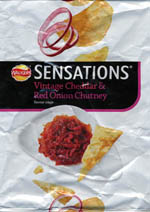If you’ve never heard of ATTRA, you’re not alone (I hadn’t heard of it until today)—but you’re probably also not a farmer seeking to grow food via environmentally sustainable means. ATTRA is the National Sustainable Agriculture Information Center and, as this post from Gristmill explains, is both an indespensible resource for small-scale farmers and on the Congressional budget chopping block. Even if this is the first you’ve heard of the program, the prospect of its loss is something about which you should be concerned.
The value of ATTRA as a resource became apparent to me very quickly upon visiting the site. Each link that I clicked on provided me with a wealth of information about topics that I’ve wondered about even at one of the smallest scales of farming imaginable: the fifteen square foot patch of soil in which I try to grow vegetables in my backyard. Particularly helpful (because it’s a topic that I struggle with and eventually throw my hands in the air in exasparation and surrender over) was the essay on sustainable weed management, which explains the root cause of weeds:
When a piece of land is left fallow, it is soon covered over by annual weeds. If the field is left undisturbed for a second year, briars and brush start to grow. As the fallow period continues, the weed community shifts increasingly toward perennial vegetation. By the fifth year, the field will host large numbers of young trees in a forest region, or perennial grasses in a prairie region. This natural progression of different plant and animal species over time is a cycle known as succession. This weed invasion, in all its stages, can be viewed as nature’s means of restoring stability by protecting bare soils and increasing biodiversity.
The article then goes on to explain in great detail how interspersing a variety of crops will help naturally control weeds’ ability to propogate. Many of the tips are geared toward farmers (not backyard gardeners), but some of the information provided could help even the most lackadaisical gardener (such as the potential benefits of including sunflowers among your other crops). And that’s just the information in one article! The breadth and depth of information available from ATTRA is astounding.
ATTRA would require $2.5 million to continue its work. To put this in context, the USDA’s R & D budget as a whole is $2.4 billion (one thousand times the amount that would go into researching sustainable means of production). It would be a shame if a program that provides this extent of quality information about a topic that’s essential to our long-term agricultural success were to be axed from the budget when the investment required to sustain it is so comparably small.
If you agree, contact your senator and ask them to sign onto Congressman Boozman (R-AR)’s letter asking USDA to restore full 2007 funding to the ATTRA sustainable agriculture information service.


